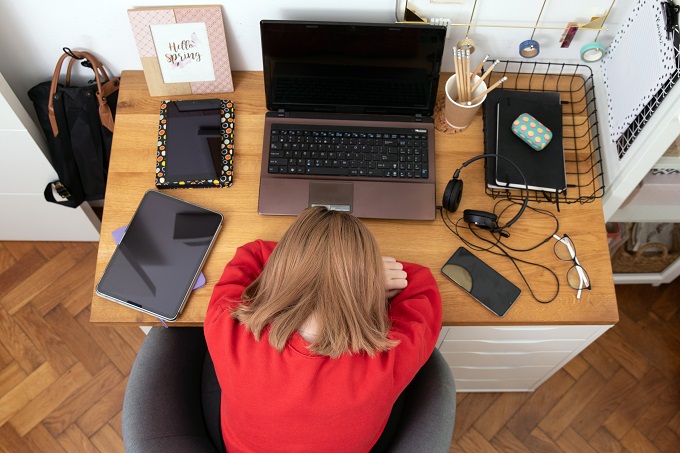
© wip-studio - stock.adobe.com
There are multiple considerations and issues at play – from the level of access students have to the internet and devices at home, to the capacity of parents and whānau to support them.
The Education Hub – a not for profit established to bridge the gap between research and practice in New Zealand’s education sector – has been working on ways to best support teachers, schools, ECE centres and parents as COVID-19 rapidly gathers momentum. Its Founder, former secondary school teacher and highly-respected academic Dr Nina Hood has developed 12 crucial ideas that will assist teachers and families navigate the challenges as young people shift to home-based learning this week.
1. Shorten timings. Think about how to organise learning into tightly focused bursts with regular breaks in between and opportunities for play and socialisation. Particularly for younger children, think carefully about the amount of time each day you expect them to spend on formal schoolwork.
2. Identify learning priorities. Rather than trying to do everything, identify the learning that you most value and will prioritise over the coming time period across the different curriculum areas. The bulk of your focus should be on planning for this learning. Reading should definitely feature highly on any priorities list.
3. Relationships and social connection are essential. Prioritise how you will maintain strong relationships and social connection among staff, between teachers and students, and between students and students. This might mean creating virtual classrooms using video conferencing or teachers holding daily online office hours. If you’re not relying on the internet, having teachers call each student daily for a brief check in on their wellbeing and learning might be an option.
4. Draw on what you know about how people learn. It’s important to remember the basic principles of how people learn are just as relevant when designing distance learning programmes. Make sure you take into consideration both the cognitive aspects of learning and the social emotional side, including motivation and self-regulation, when designing activities.
5. Keep things simple and consistent. Routine is incredibly important to humans and becomes even more important in times of uncertainty for both teachers and students. When moving to an online learning model, schools should select the platform they’re going to use for communicating with students together with a small set of tools for specific learning activities and use these consistently.
6. Online doesn’t mean everything has to be online. While there are many great learning activities and resources students can use online, it’s also important to provide students with activities and learning they can do offline. Think about how you want students to capture this learning and share it with others for feedback.
7. Consider what resources schools can provide to students prior to schools closing. This is particularly important when online learning is not an option. Pens and paper, and a good selection of books, would be a good starting point.
8. Plan for short periods of internet access. Some students will only have access to the internet through a smart phone and for a short period each day, perhaps as little as five or ten minutes. Consider what sorts of resources that can be quickly accessed and downloaded would best support their ongoing learning.
9. How can you support parents? Consider what your expectations are for how parents can be supporting their children, the most useful things parents can be doing, and whether there is particular support or specific resources that parents need.
10. Wellbeing is of central importance. While there is a lot of focus on how schools can continue to support their students’ learning during a shut down, it’s also important to think about how to support students’ wellbeing. Wellbeing, emotions and learning are all interconnected.
11. Don’t forget about play. Play is important for people at all ages, but particularly for children. Providing opportunities each day for play and encouraging children to engage in a range of different play activities is vitally important and enormously beneficial.
12. Demonstrate care. Most important of all, in times of uncertainty when anxiety and stress levels are running high, demonstrating care to each other and acting with compassion is essential. At The Education Hub, we think that the best way we can demonstrate care to our stakeholders is to do what we do best – be a hub for curated, reliable, practical resources that people can trust.
Educators and politicians are trying to address the current teaching shortage through different policy settings.…
Melanie Webber was the president of the secondary school union PPTA Te Wehengarua from 2021…
Wait times for paediatric care is having an impact on young people’s education and the…
Home of the brave, land of the free… except when it comes to books for…
Could a gender achievement gap in maths be due to confidence? Sarah Buckley from the…
The much-delayed English draft curriculum is now out for consultation, generating discussion from teachers.
This website uses cookies.